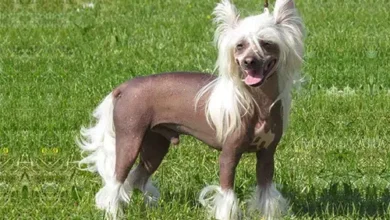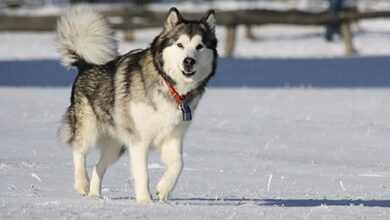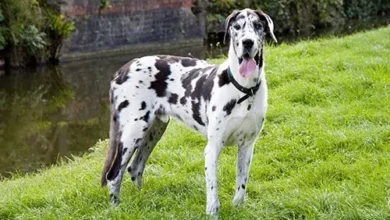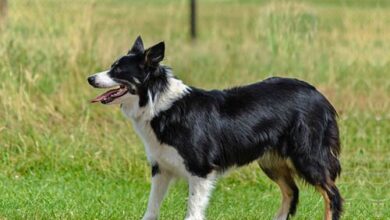West Highland White Terrier Breed


The West Highland White Terrier or Westy, is a small and friendly dog, but rough and brave at the same time. Developed as a hunting dog, today it is one of the best pets that exist. This breed of dog comes from Scotland, more specifically from Argyll, and is characterized by its bright white hair. It appeared at the beginning of the twentieth century fruit of the offspring among cairn terrier specimens that had white and cream hair. At first, the breed was used for fox hunting although it soon became the excellent companion dog we know now.
It is a very affectionate and sociable dog, so it is ideal for families with children, who can give them a lot of company and affection. In addition, this breed needs to do moderate physical activity, making it perfectly compatible to have a westy in a small apartment or house, while your dose of daily walks. If you want to adopt a West Highland White Terrier, this race card from ExpertoAnimal will help you solve all your doubts.
Origin of the West Highland White Terrier
This breed originated in the highlands of western Scotland. The literal translation of his name is “White Terrier of the Western Highlands”. Initially, the breed was not distinguished from other short-legged Scottish terriers, such as the cairn, the Dandie Dinmont, and the Scottish terrier. However, with time each variety was raised separately, to constitute true breeds of dogs.
These terriers were originally bred as dogs for fox and badger hunting and had coats of different colors. It is said that Colonel Edward Donald Malcolm decided to breed only the white dogs after one of his red dogs died because they mistook him for a fox when leaving the den. If the legend is true, that would be the reason why the westie is a white dog.
In 1907 this breed was presented for the first time at the prestigious dog exhibition of Crufts. Since then, the West Highland White Terrier has enjoyed great acceptance in dog competitions and thousands of homes around the world.
Physical characteristics of West Highland White Terrier
The Westy is a small dog, ideal for those who have a floor as it measures about 28 centimeters to the cross and usually does not exceed 10 kg of weight. Females are usually somewhat smaller than males. This is a small, compact dog, but with a strong structure. The back is level (straight) and the back is broad and strong, while the chest is deep. The legs are short, muscular, and strong.
The head of the West Highland White Terrier is a little bulky and covered with abundant fur. The nose is black and somewhat elongated. The teeth are large to the size of the dog and very powerful, useful features for hunting the fox in its burrow. The eyes are medium and dark and have an intelligent and alert expression. The face of Westy is sweet and sympathetic, she seems to be always alert due to her small pointed-ended ears. The tail is a typical and much-appreciated element of the appearance of the West Highland. It is covered with abundant rough hair and is as straight as possible. It is shaped like a small carrot, it is between 12.5 and 15 centimeters long, and under no circumstances should it be cut.
The most notable feature of the West Highland is its beautiful white hair (the only accepted color), which is divided into an inner layer of soft and dense hair that contrasts with an outer layer of hard hair and is somewhat rougher. The outer layer usually grows to 5-6 centimeters something that, combined with white hair, makes it essential to go to the hairdresser with some regularity. The Teddy hairstyle is one of those used for this breed.
The character of the West Highland White Terrier
Brave, rogue, very confident, and dynamic, the Westie is perhaps the most affectionate and sociable of terrier dogs. Still, keep in mind that it is a brute dog designed for hunting dangerous animals like the fox. Although it will depend on each specimen, the Westy usually relates perfectly with other dogs thanks to its balanced and sympathetic temperament. It is important that any dog is properly socialized from childhood in parks and nearby environments to meet other pets and people.
We must know that this wonderful dog is also the perfect companion of children, with whom you will enjoy an active pace of play. If we intend to adopt a dog for our children to enjoy spending time with it we must be clear about the importance of its small size, and it is that a game too abrupt can end with a broken leg. We must educate them so that the game between pets and children is the right one. In addition, they tend to bark and dig, so they can complicate things for those who like extreme silence and a well-kept garden. However, they are excellent pets for dynamic people who like outdoor activities.
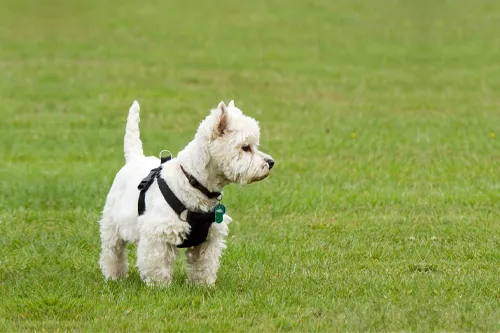

We usually talk about a dog with a strong personality and is that it is very determined and brave despite its small size. The Westy is an active and affectionate dog who will love to feel part of the family nucleus. He is a very accommodating and affectionate dog with those who take care of him every day, to whom he will offer his most positive version of life. Sweet and restless, the Westy will love it if you take him for a walk in the countryside or the mountains, even as an old dog, where he will bring out his past as a hunting dog if he finds an interesting trail he can follow. It will also be essential that you play with him regularly to maintain his agility and intelligence as he deserves.
Care of the West Highland White Terrier
West Highland skin is somewhat dry and too frequent a bath can make you prone to rashes. We will try to avoid this problem by washing it with a regularity of 3 weeks approximately with an exclusive shampoo recommended for the breed. After the bath, we will dry your ears well with a towel, a part of your body that needs regular cleaning.
Hair brushing should also be regular, so your coat will look healthy and shiny. Also, brushing is pleasant for most dogs, for that reason, we affirm that the practice of their care will promote your bond. Although hair maintenance is not that complicated, the Westie tends to get easily soiled by being completely white. It is normal for our Westy to get his nose or legs dirty after eating or playing, a trick is to use baby wipes to clean the area. We will also pay attention to the tears that tend to accumulate leganhas, and sometimes to create some unsightly brown spots.
It is not a dog that needs large doses of exercise, for that reason, taking two or three walks daily at an active pace will be enough to have our West Highland happy and healthy. Due to its small size, this dog can exercise inside the house but enjoys playing outdoors, in a fenced place. Also, it is important to give this dog all the company he needs. Since it is a very sociable animal, it needs to be with its family as long as possible, and it is not good to leave it alone for prolonged periods. It is a dog suitable to live in an apartment.
Education of the West Highland White Terrier
Westies tend to be friendly to people and can get along with other dogs when they have been properly socialized. Their strong urge to prey, however, makes them unfit to tolerate small pets, which they tend to hunt. However, it is important to start socializing dogs at an early age, to prevent future problems of shyness or aggression. The strong personality of these small dogs has led many to think that it is difficult to train them, but that is not true. West Highland White Terriers are very intelligent dogs that learn quickly when they are trained in a positive, with methods such as clicker training, treats, and prizes. They do not respond well to traditional training techniques, based on punishment and negative reinforcement. It only needs regular training in terms of education as it is usually something independent. It is always alert to its territory, ready to defend it, for that reason, we say that it is an excellent watchdog.
Health of the West Highland White Terrier
Westy cubs are especially vulnerable to craniomandibular osteopathy, a disease that involves abnormal growth of the jaw. It is genetic and should be treated correctly with the help of a veterinarian. It usually appears about 3-6 months of age of the puppy and disappears at 12, after the application of corticosteroids or natural remedies among others. It is rarely serious.
Other diseases your West Highland may suffer from are globoid cell leukodystrophy or Legg-Calve-Perthes disease. Westie is also susceptible, though less frequently, to cataracts, patellar dislocation, and copper toxicosis.


